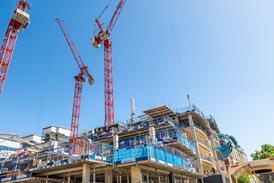Le Corbusier’s Maisons Jaoul project in Paris was completed in 1955, just two years after the Chapel at Ronchamp.

Arranged informally over three levels, the two houses have load-bearing brick walls, concrete floors and vaulted ceilings. The combination of coarse brickwork and exposed concrete was a response to the north-west European climate and a dramatic departure from the white-walled work of the preceding three decades.
At Maisons Jaoul, Le Corbusier revels in the expression of exposed raw materials. He stipulated common, rough bricks with as much colour variation as possible; and irregular arrises, something which can’t have been that difficult to achieve given that the bricks were delivered to site not on carefully stacked pallets but in heaps offloaded from the back of a truck. He also specified irregular, flush-jointed brickwork which, to avoid any semblance of textural monotony, had to be laid by a different bricklayer every three courses.
Brick Bulletin January 2005

- 1
- 2
- 3
- 4
- 5
- 6
- 7
 Currently
reading
Currently
reading
Le Corbusier’s fling with brick
- 9
- 10
- 11
- 12





































No comments yet